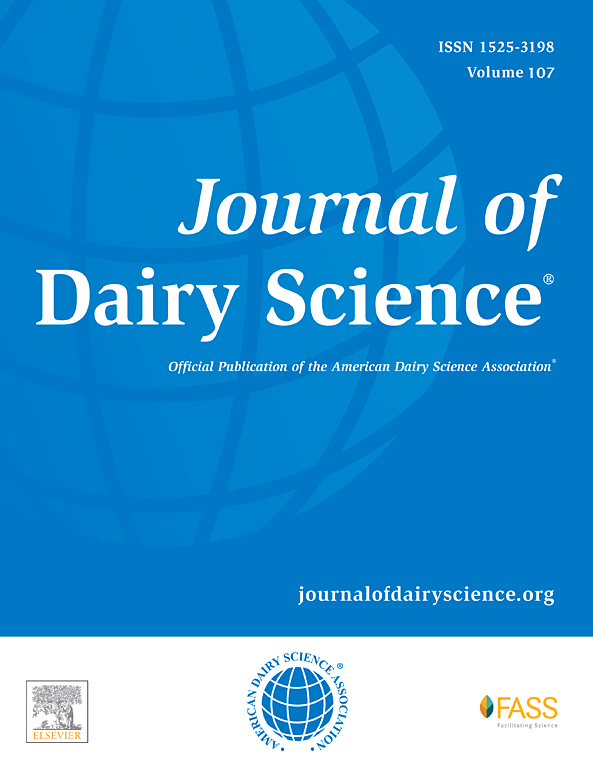婴幼儿配方奶粉风味品质差异:营养成分与化学反应的协同作用。
IF 4.4
1区 农林科学
Q1 AGRICULTURE, DAIRY & ANIMAL SCIENCE
引用次数: 0
摘要
本研究阐明了营养成分和控制婴儿配方粉(IF)中异味形成的化学反应之间的相互作用。样品Z是生牛乳碱与植物脂类(1,3-二烯烃-2-棕榈素[OPO]、向日葵和亚麻籽油)的IF,显示出加速氧化(氧化产物是样品J的两倍),产生丙醛、戊醛和己醛,导致金属味、鱼腥味和藻类样气味。不饱和脂质也促进颗粒聚集,维生素降解和刺激性醛或酮(2,4-辛二烯醛,1-辛-3-酮)。样品J(含有植物脂[OPO,大豆油和玉米油]的生羊奶基料的IF)含有γ-十二内酯,显示出花香或甜味,但仍保留鱼腥味或金属味。这些发现强调了脂质组成在维持风味稳定性中的重要作用,为优化中质提供了一种实用的方法。通过选择性地加入具有平衡UFA谱的抗氧化植物油,可以最大限度地减少储存过程中的异味形成,同时确保足够的必需营养素(例如二十二碳六烯酸、花生四烯酸和二十碳五烯酸)的输送。本文章由计算机程序翻译,如有差异,请以英文原文为准。
The flavor quality differences of infant formula: The synergistic effects of nutritional components and chemical reactions
This study elucidates the interplay between nutritional composition and chemical reactions governing off-flavor formation in infant formula powder (IF). Sample Z, which is an IF of a raw bovine milk base with vegetable lipids (1,3-diolein-2-palmitin [OPO], sunflower, and flaxseed oils), showed accelerated oxidation (the oxidation products are twice those of sample J), generating propanal, pentanal, and hexanal, leading to metallic, fishy, and algae-like odors. Unsaturated lipids also promoted particle aggregation, vitamin degradation, and pungent aldehydes or ketones (2,4-octadienal, 1-octen-3-one). Sample J (IF of a raw caprine milk base with vegetable lipids [OPO, soybean, and corn oils]), containing γ-dodecalactone, exhibited floral or sweet notes but still retained fishy or metallic off-flavors. These findings underscore the crucial role of lipid composition in maintaining flavor stability, offering a practical approach for optimizing IF. By selectively incorporating oxidation-stable vegetable oils with balanced UFA profiles, off-flavor formation during storage can be minimized while ensuring adequate delivery of essential nutrients (e.g., docosahexaenoic acid, arachidonic acid, and eicosapentaenoic acid).
求助全文
通过发布文献求助,成功后即可免费获取论文全文。
去求助
来源期刊

Journal of Dairy Science
农林科学-奶制品与动物科学
CiteScore
7.90
自引率
17.10%
发文量
784
审稿时长
4.2 months
期刊介绍:
The official journal of the American Dairy Science Association®, Journal of Dairy Science® (JDS) is the leading peer-reviewed general dairy research journal in the world. JDS readers represent education, industry, and government agencies in more than 70 countries with interests in biochemistry, breeding, economics, engineering, environment, food science, genetics, microbiology, nutrition, pathology, physiology, processing, public health, quality assurance, and sanitation.
 求助内容:
求助内容: 应助结果提醒方式:
应助结果提醒方式:


